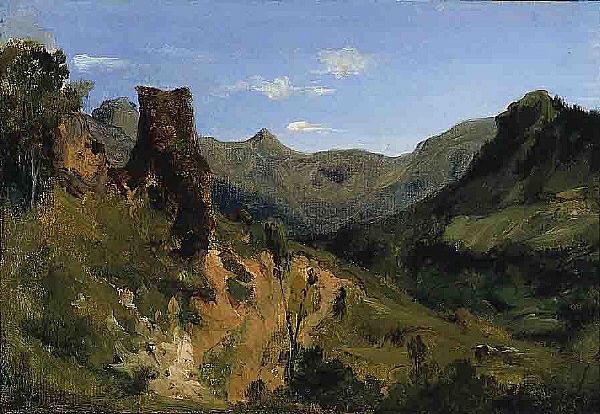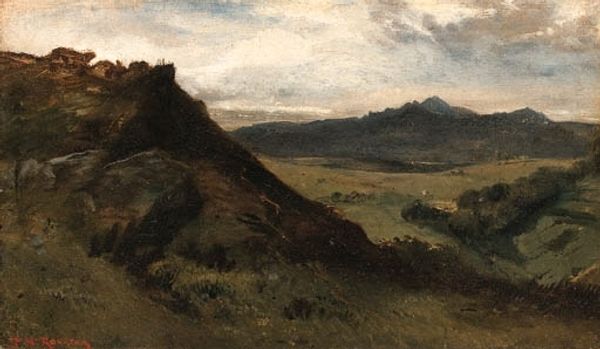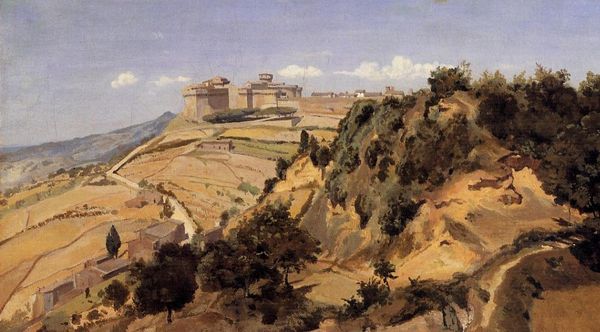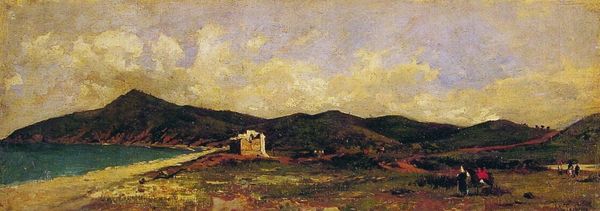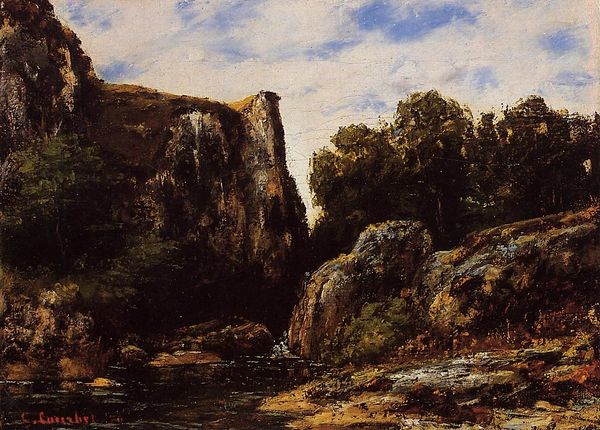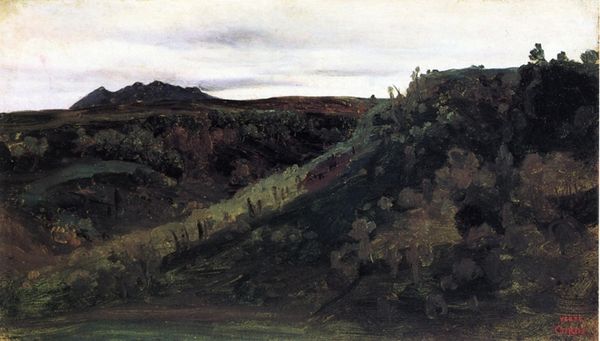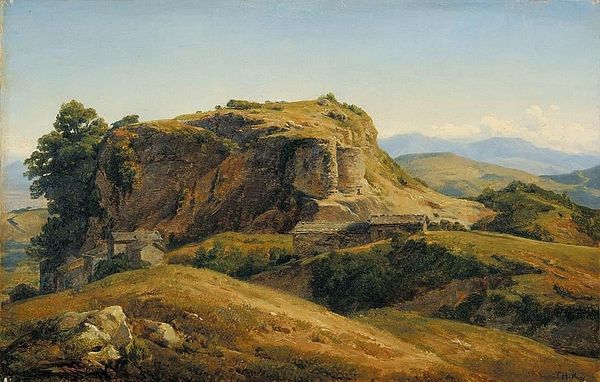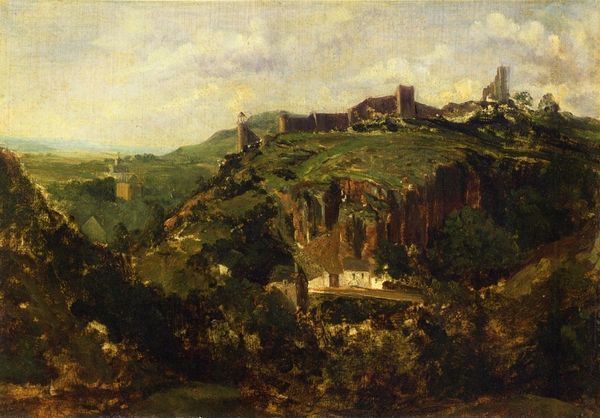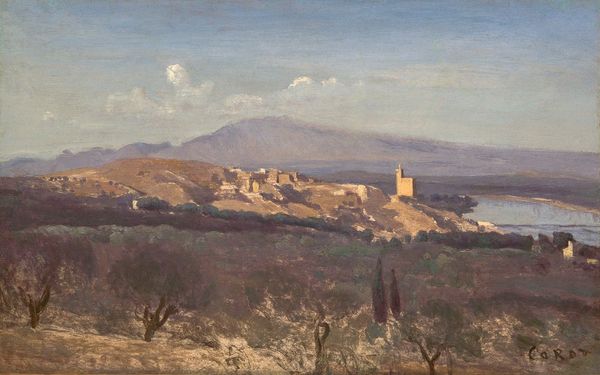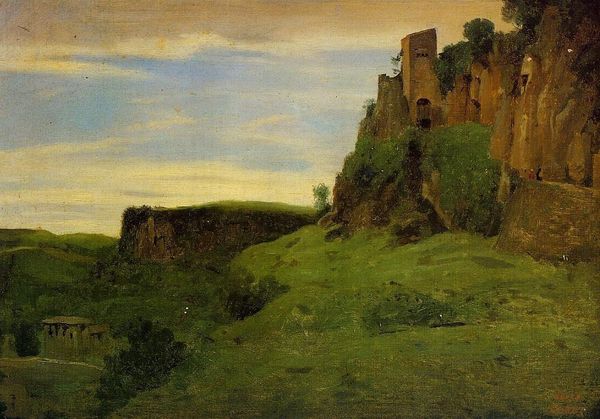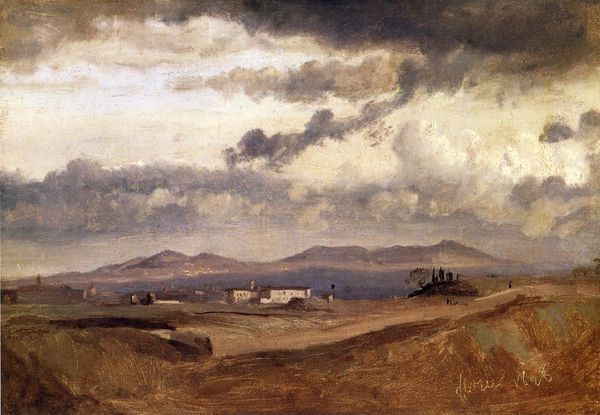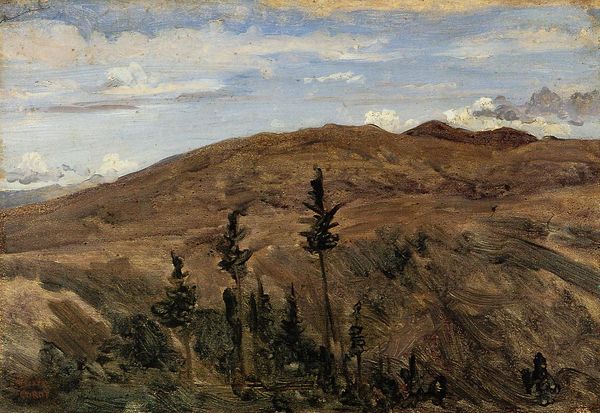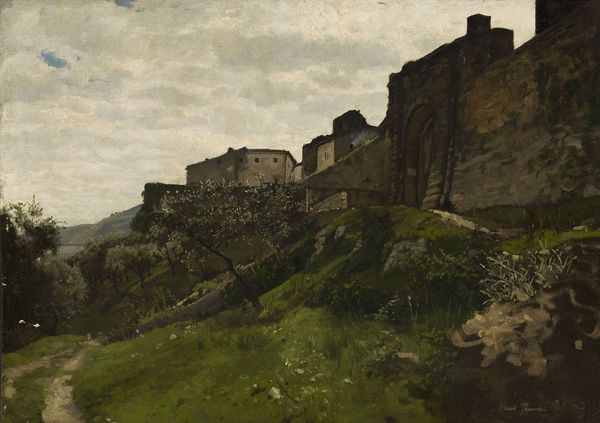
painting, plein-air, oil-paint
#
sky
#
painting
#
plein-air
#
oil-paint
#
landscape
#
oil painting
#
romanticism
#
cityscape
#
realism
Dimensions: 29.3 x 44.2 cm
Copyright: Public domain
Curator: We're looking at "The Roman Odalisque (Marietta)", an 1843 oil painting by Camille Corot, currently held in a private collection. Editor: A landscape bathed in a sort of amber melancholia. The composition feels monumental, despite what I assume is a relatively modest scale. There's a sense of stillness, of history weighing down on the scene. Curator: Absolutely. Structurally, Corot has divided the canvas into distinct registers. We have the dark foreground foliage leading up to the hill with buildings, the distant landscape fading into the haze, and finally, the subtly gradated sky. Note the tonal unity; earthy browns and muted greens dominate. Editor: The buildings themselves strike me as symbols of established power and perhaps even isolation. They're perched so precariously atop the hill. I imagine a community both fortified and vulnerable, their existence intimately linked to this particular location. Curator: Indeed. The artist was embracing plein-air techniques. This informs a style which blends Romanticism and early Realism. Note the subtle brushwork, especially in rendering of the sky, how the diffused light flattens planes while softening edges. The painting seems to exist in the threshold of ideal and observation. Editor: I agree. And considering the title—referencing a reclining female figure, albeit not visually present—it triggers expectations of Orientalist fantasy. Its absence complicates things. Could it symbolize a yearning, or even an acknowledgment of power dynamics in the landscape? What story would she tell about this landscape, this place? Curator: It's an intriguing elision. Instead of a literal odalisque, we're given a "Roman" landscape imbued with a similarly exotic and idealized, and romantic spirit. Editor: Seeing it that way opens new layers of understanding for me. It reminds me of a past—a lost Arcadia—now burdened and seen through modern eyes. Curator: Corot’s restraint offers a unique meditation on memory and vision, inviting us to reconsider the romantic ideal through a decidedly grounded and empirical lens. Editor: A powerful exercise in visual and historical layering; I feel more enriched for examining it together.
Comments
No comments
Be the first to comment and join the conversation on the ultimate creative platform.
